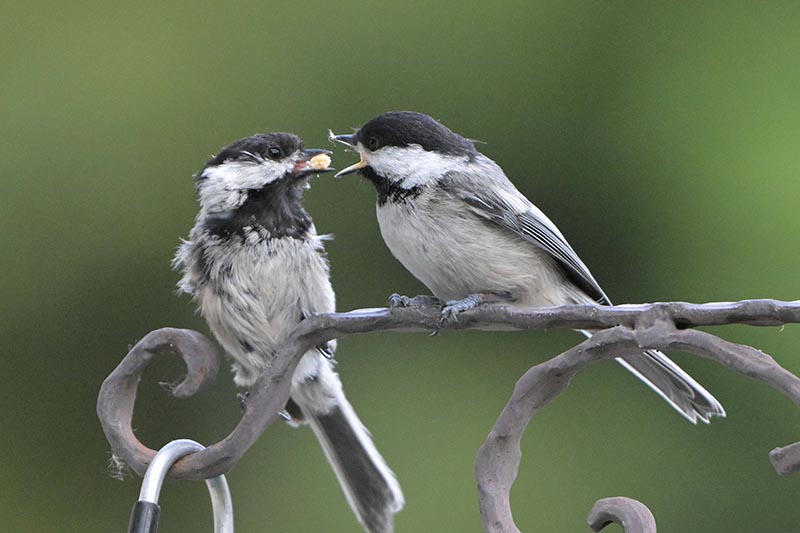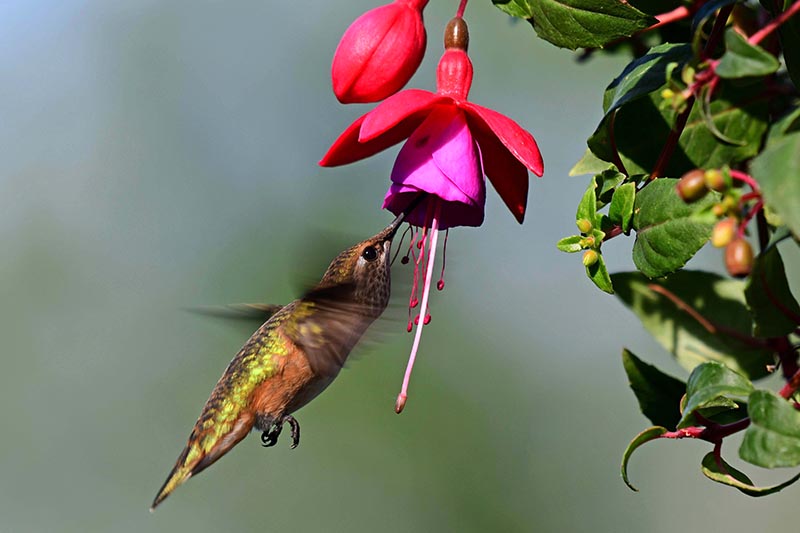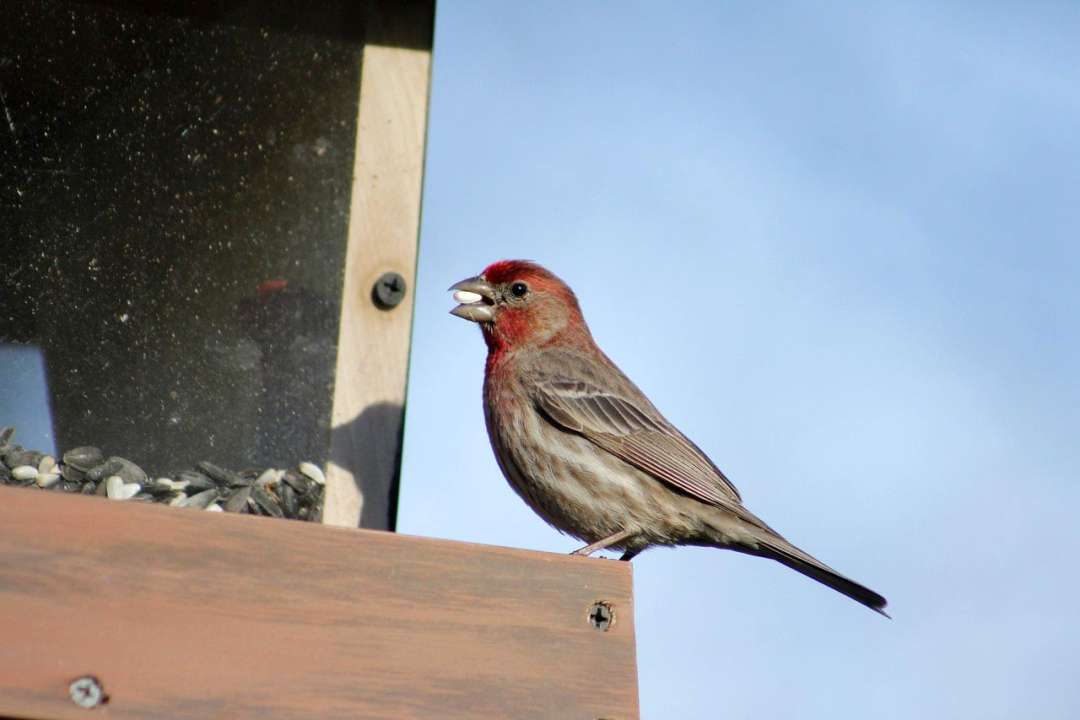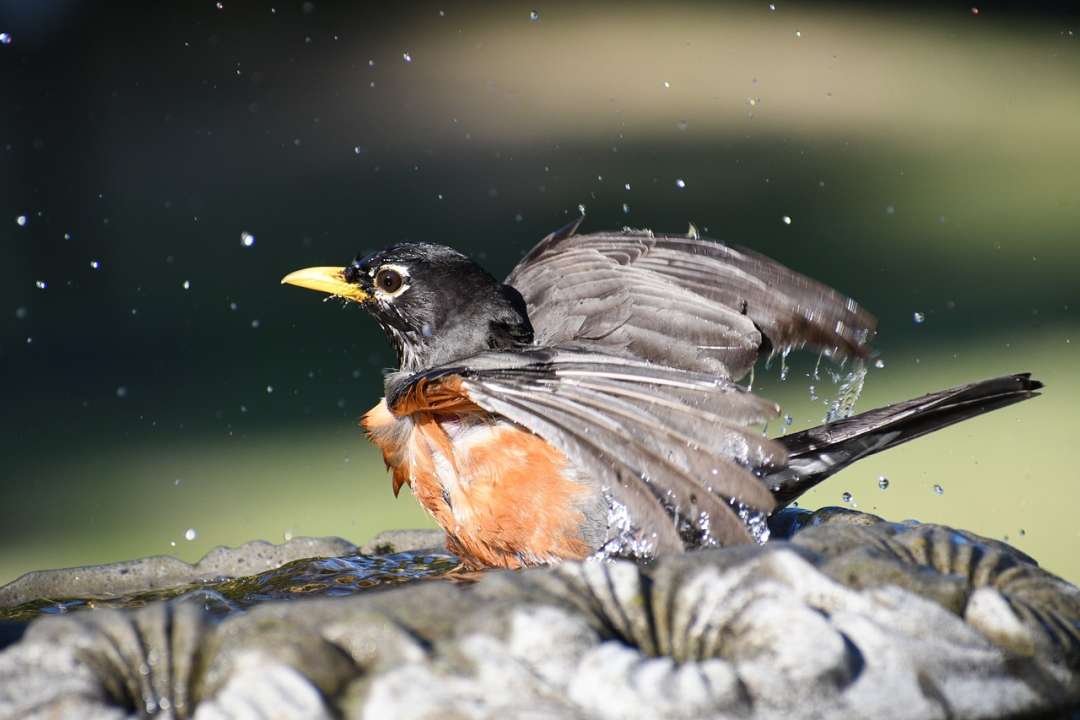Feeding Birds in Late Summer
By Myrna Pearman, Mother Nature’s Naturalist and Backyard Birding Expert

August is often a slower month at the bird feeders. However, bird feeding stations will still be visited during the dog days of summer, not only by adult birds but also by young birds, including fledglings and juveniles (young birds still dependent on their parents are called fledglings while those that are recently independent are called juveniles).
Juveniles may discover feeding stations on their own, but the more likely scenario is that their parent(s) introduced them to feeder locations as fledglings. As part of the teaching process, adults show their fledglings how and where to feed.
It is interesting to watch parent birds bring their noisy, begging fledglings to a backyard feeder. Species such as chickadees, woodpeckers and nuthatches will take feeder offerings—including peanut butter, suet and seeds—and feed them directly to their young. This is an interesting time to observe the antics of the fledglings, as they beg for food by calling, opening their beaks, vigorously fluttering their wings and often following their parents around. Eventually the adults, weary from weeks of intense parental duties, will feed the young less and less, thereby encouraging them to find their own food. Even after the juveniles are feeding independently, family groups may remain together for the rest of the summer.
Although both adults and juveniles will continue patronizing feeding stations throughout the late summer and fall, visitation rates are influenced by population numbers as well as shifting territorial boundaries. Some individuals disperse later in the summer, so will have to find new food sources, while others will remain in the breeding area and thus be familiar with all the good feeding spots.

Hummingbird feeders will remain busy, as both adult males and females, as well as juveniles, will readily drink sugar water. Ideally, your yard will also have at least a few late-blooming hummer-attracting plants, which will supply natural nectar as well as small insects.

House Finches, which are year-round feeder patrons, love sunflower chips. Not only will they eat chips for their own sustenance, but the seeds are nutritious for their nestlings. When their young are small, House Finches feed them by regurgitating “crop milk” into their mouths. After they fledge, the parents will bring them to feeders where they will take sunflower chips and transfer them directly into their youngsters’ mouths.
To keep seeds as fresh as possible, store in a cool damp area and dispense small quantities at a time. Keep nuts refrigerated during the summer. If possible, move your feeders to shady spots in your yard, especially during hot, sunny periods. While it is fine to have some seed spillage (the ground-feeding sparrows will love it), avoid large build-ups of seeds, especially sunflower hulls. Clean up the area under your feeders on a regular basis.
While raw suet will melt and possibly mat bird feathers during warm weather, birds in the wild readily access melting fat that they find from carcasses. If melting suet is a concern, however, use no-melt commercial suet blocks.

Finally, don’t forget about water. All birds require water for both bathing and drinking, especially during the hot summer, so even a small bird bath, topped up and cleaned regularly, will be well used.
As always, the best way to attract wild birds is to plant ground covers, annuals, perennials, shrubs and trees that produce fruit and seeds that the birds can dine on. Leave the fruit and seed heads on so the birds have plenty of natural food to eat over the coming months.
Have more questions? Visit your local Buckerfield's and we'll be happy to help!



